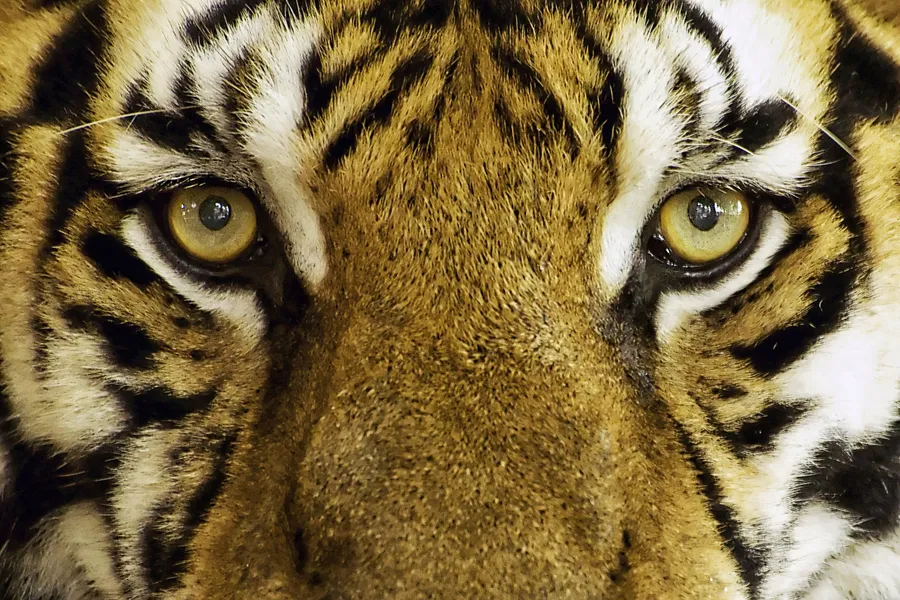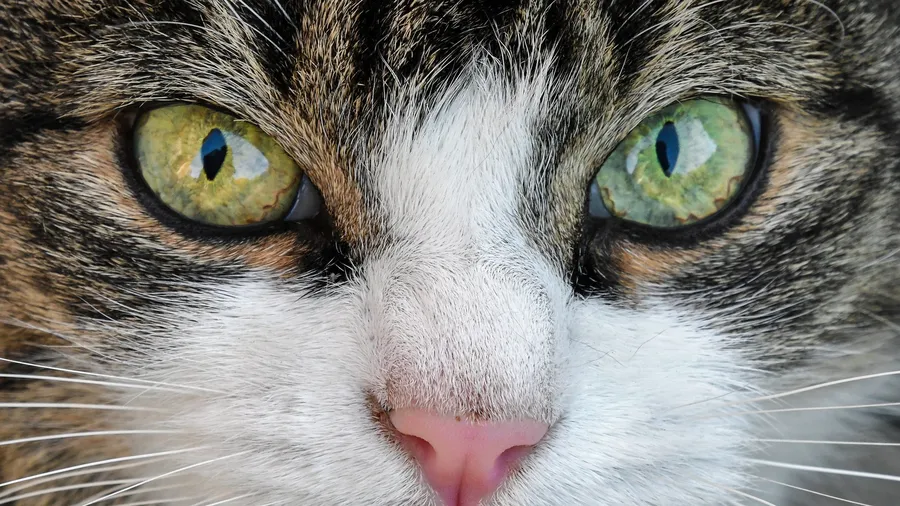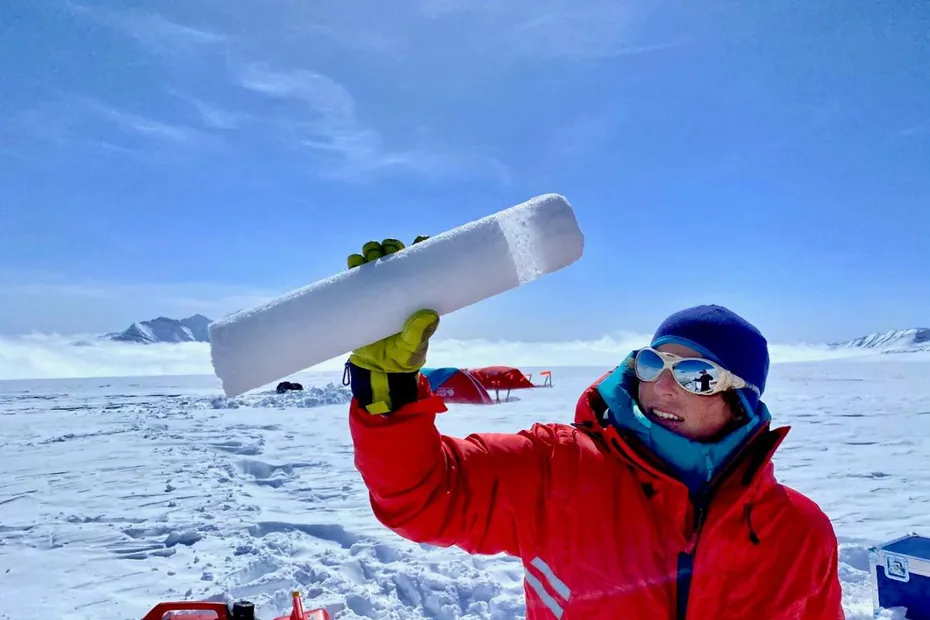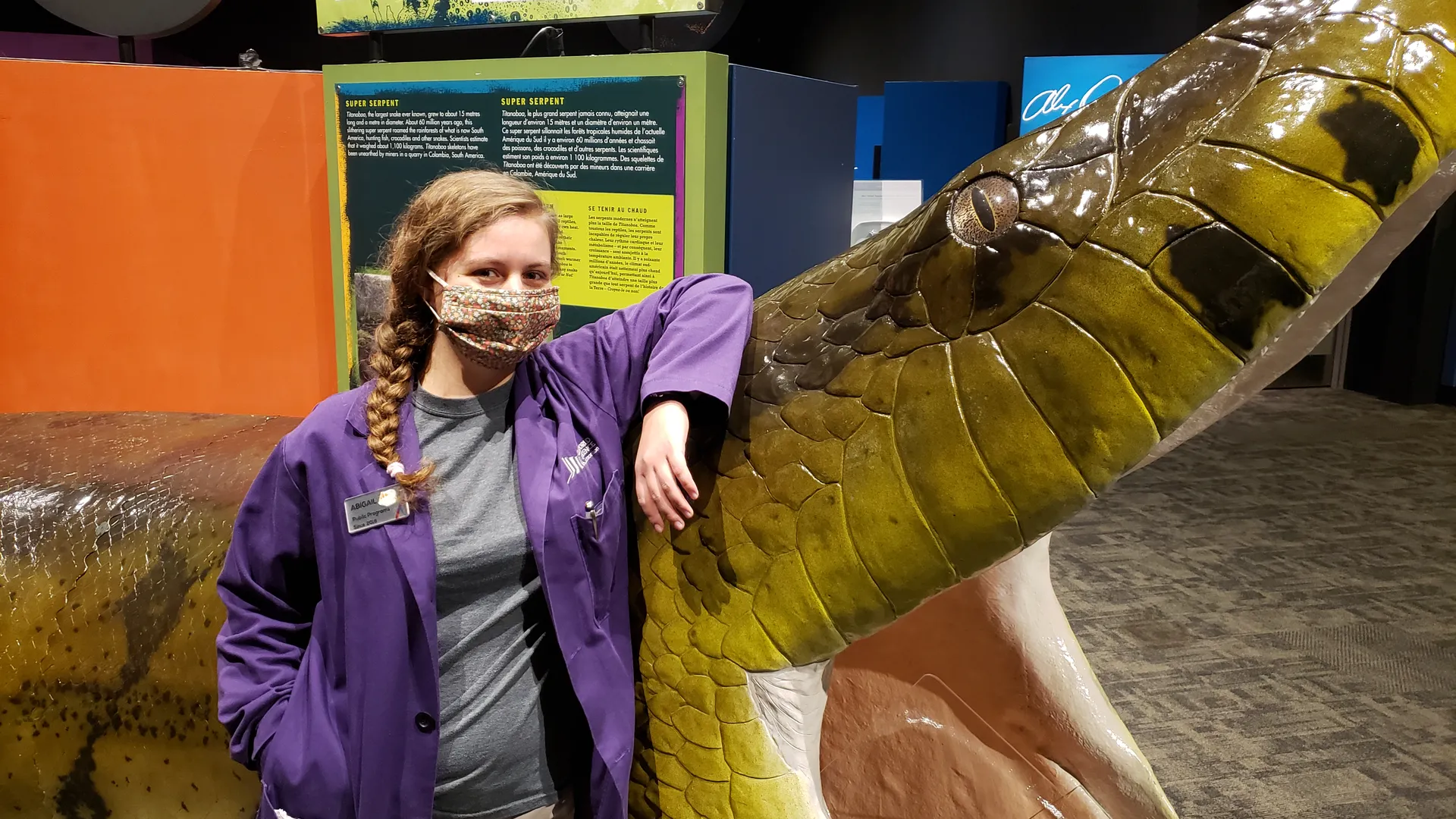Snake Eyes
Posted:
Extinct Titanoboa was the largest snake that ever lived, but did it's eyes resemble the eyes of modern snakes?
As you entered Ripley’s: Believe it or Not, you caught a glimpse of a ferocious sight - the Titanoboa. A colossal snake from 60 million years ago, Titanoboas could be up to 13 meters (42.7 feet) long – about one and a half school busses! Its massive amber eyes glisten under the lights as vertical slits stare at you. But did Titanoboa really have eyes shaped like that? It is almost impossible to tell from just a fossil. But let’s think like a scientist and compare what we see in other animals to try and find an answer!
The glistening slits we see are the snake’s pupils. Pupils are the black spot in the center of your eye, and they control how much light can enter. In most animals, including humans, pupils are circular. So why do some animals, like snakes, have vertical pupils?
One theory suggests vertical pupils provide better depth perception. This means that ambush hunters, such as house cats, can attack with more accuracy! But this only works if the animal is low to the ground. So taller animals like tigers don’t get an advantage from vertical pupils. Since the Titanoboa is massive, it is unlikely vertical pupils would have helped them ambush prey.

Credit: WenPhotos, Pixabay

Credit: christels, Pixabay
Another theory suggests vertical pupils are related to sleep schedule. Some scientists think that vertical pupils can widen even more than circular pupils, which lets in more light. This is extremely helpful for nocturnal animals hunting during a dark night!
So was the Titanoboa nocturnal, and therefore need vertically shaped pupils? Maybe! But behavior can’t be figured out from a fossilized skeleton. We may not have a solid answer to if Titanoboa had vertical pupils right now, but new advances are made each day. Perhaps our answer is buried under layers of rock, just waiting to be discovered!
Related Articles


Food Chain Reactions
How Climate Change is Impacting Canada's Lakes


It Is Ice to See You
How Seasonal Connections Are Affected by Climate Change


Getting to the Core of Climate Change
A Look at How Refrigerants Are Affecting Our Environment through Ice Cores
Related Articles


Food Chain Reactions
How Climate Change is Impacting Canada's Lakes


It Is Ice to See You
How Seasonal Connections Are Affected by Climate Change


Getting to the Core of Climate Change
A Look at How Refrigerants Are Affecting Our Environment through Ice Cores





